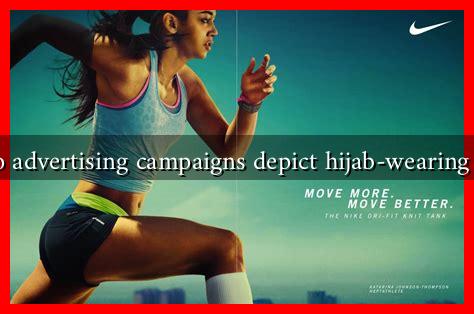-
Table of Contents
How Do Advertising Campaigns Depict Hijab-Wearing Women?
The representation of hijab-wearing women in advertising campaigns has evolved significantly over the years. As brands strive to connect with diverse audiences, the portrayal of Muslim women in marketing materials has become a focal point for discussions around inclusivity, empowerment, and cultural sensitivity. This article explores how advertising campaigns depict hijab-wearing women, the implications of these representations, and the impact on societal perceptions.
The Shift in Representation
Historically, hijab-wearing women were often marginalized or stereotyped in advertising. However, recent years have seen a shift towards more authentic and positive representations. This change can be attributed to several factors:
- Increased Diversity in Marketing: Brands are recognizing the importance of representing diverse cultures and identities in their campaigns.
- Consumer Demand: There is a growing demand from consumers for brands to be more inclusive and socially responsible.
- Social Media Influence: Platforms like Instagram and TikTok have empowered hijab-wearing women to share their stories and challenge stereotypes.
Positive Depictions in Advertising
Many brands have embraced the opportunity to showcase hijab-wearing women in a positive light. Notable examples include:
- Nike: In 2017, Nike launched the “Pro Hijab,” a sports hijab designed for athletes. The campaign featured Muslim athletes, emphasizing empowerment and inclusivity in sports.
- H&M: The fashion retailer has featured hijab-wearing models in its campaigns, promoting a message of diversity and acceptance in fashion.
- CoverGirl: In 2017, CoverGirl made history by featuring a hijab-wearing model, Nura Afia, in its advertisements, challenging traditional beauty standards.
These campaigns not only celebrate the beauty and strength of hijab-wearing women but also challenge the stereotypes that have long been associated with them. By showcasing these women in various roles—athletes, professionals, and fashion icons—brands are helping to reshape societal perceptions.
The Impact of Representation
The way hijab-wearing women are depicted in advertising has significant implications for both the individuals represented and society as a whole. Some of the key impacts include:
- Empowerment: Positive representation can empower hijab-wearing women, providing them with role models and encouraging self-acceptance.
- Breaking Stereotypes: Authentic portrayals help dismantle harmful stereotypes, fostering a more nuanced understanding of Muslim women.
- Consumer Connection: Brands that authentically represent hijab-wearing women can build stronger connections with diverse consumer bases, enhancing brand loyalty.
Challenges and Criticisms
Despite the progress made, challenges remain in the representation of hijab-wearing women in advertising. Some criticisms include:
- Tokenism: Some campaigns may use hijab-wearing women as tokens rather than genuinely engaging with their stories and experiences.
- Commercialization of Culture: There are concerns that brands may exploit cultural symbols for profit without understanding their significance.
- Inconsistent Representation: While some brands have made strides, others continue to perpetuate stereotypes or exclude hijab-wearing women altogether.
Conclusion
The depiction of hijab-wearing women in advertising campaigns is a complex and evolving topic. While there has been significant progress towards more positive and authentic representations, challenges remain. Brands that prioritize inclusivity and cultural sensitivity can play a crucial role in shaping societal perceptions and empowering hijab-wearing women. As consumers continue to demand diversity in marketing, the future of advertising holds the potential for even more meaningful representations that celebrate the richness of different cultures.
For further reading on the impact of representation in advertising, you can explore resources from Adweek.

